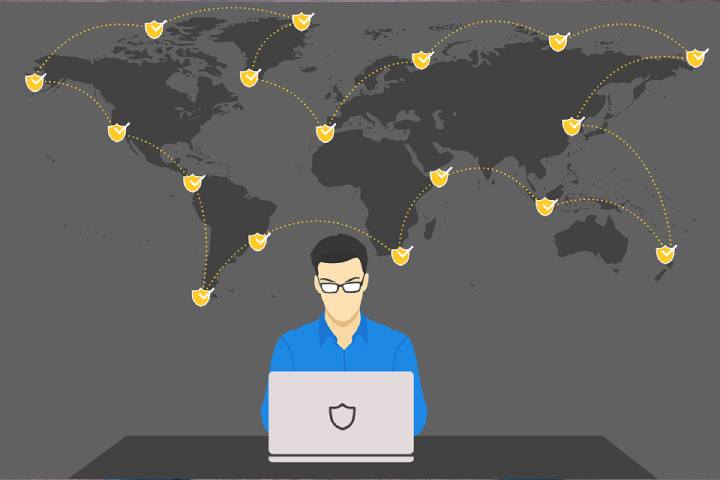If you have just purchased a new laptop, you more than likely spent hours researching every last detail of the specification to make sure that it ticked all of the boxes. Perhaps you spent many an evening watching reviews on YouTube or making comparisons against other potential contenders before making your final decision. Buying a new laptop can be very costly. Hence, it’s essential to take your time and make the right choice.
You will probably fuss over your new toy for a few days or weeks after it arrives, being extra careful when handling it to ensure that it remains scratch and debris free.
When the novelty wears off (and it almost certainly will), you will become less protective about it, which is when it can be damaged, scratched, or (if the right security isn’t in place) hacked. That’s why you should put protection measures in place from the outset, when taking care of it is a priority, and at the forefront of your mind. Here are six ways to protect your laptop and its contents.
1. Laptop skins
Protecting the body of your laptop is just as important as protecting the data and files that it stores.
Laptop skins are usually made from vinyl, but in some cases can be produced from rubber or fabric – although these are not often as aesthetically pleasing. These act like a skin-tight wrap keeping the body of your machine protected from scratches as well as water penetration. Vinyl skins are a great option if you want protection but also want something that looks the part.
While you can buy pre-generated designs, they are also fully customizable and could put your laptop into a different visual league entirely. If you want a product that creates an impact and provides a practical function at the same time, then this could be the right choice for you.
2. Bags and cases
There is a vast range of kits and examples available online and in stores, which are particularly useful if you travel around a lot. Many come with a hard-shell coating, while others have internal padding to protect your machine from dents and other damage. They usually come with several pockets and pouches making it easier to keep everything you need in one place.
3. Set a password
One of the greatest things you should do when you get your laptop is set up password protection. Even if your machine will never set foot outside your home, it’s a good idea to create one. There should be a prompt to do this when you set it up for the first time, but if not, you should find it in the control panel security section.
A security password makes it harder for anyone to access your data should your laptop be lost or stolen. It takes minutes to set up and, if your computer goes walkabout at any point, you will be happy you did.
4. Back up your data

It’s a good idea to back up your information regularly. Many people choose to do this via the cloud, where they know their information is always going to be safe and accessible. Others prefer using the likes of an external hard drive. An external hard drive plugs into your laptop via USB and allows the user to select the data they wish to back up. Regardless of which option you choose, backing up is essential. If your laptop suddenly stops working or a virus wipes your files, you could permanently lose everything.
5. Insurance
While it won’t protect your laptop in the physical sense, having insurance will undoubtedly safeguard your pocket. If you already have contents insurance in place, check the terms and conditions. Many policies will only provide cover up to a specific value for single items, and many will not include goods taken outside the home.
If you establish that your laptop isn’t covered, it’s a good idea to add it to your policy as a specified item. For a few dollars a month, it could be well worth it.
6. Anti-virus software
Anti-virus software protects your laptop from harmful viruses that could severely impact your privacy and your data. It regularly scans files to check for suspicious activity and to clean any malicious codes which may have been embedded.
There are many different levels of protection available, many of which you will need to pay for. Still, there are also lots of free anti-virus programs that provide a decent level of security.
Tech Trends
Related posts
Leave a Reply Cancel reply
Hot Topics
Categories
- Ads (5)
- Animes (25)
- Artificial Intelligence (AI) (35)
- Augmented Reality (AR) (10)
- Automotive (9)
- Bitcoin (16)
- Blockchain (24)
- Business (244)
- Business Intelligence (3)
- Cloud Computing (23)
- Computer (128)
- Concrete Technology (1)
- Cryptocurrency (10)
- Cybersecurity (42)
- Data Science (9)
- Database (4)
- DevOps (6)
- Digital Marketing (76)
- Digital Workplace (14)
- Ecommerce (1)
- Education (28)
- Electric Vehicle (EV) (1)
- Electronics & Hardware (17)
- Entertainment (42)
- Fabrication (3)
- FAQ's (1)
- Finance & Marketing (47)
- Gadgets (35)
- Games (8)
- Gear (29)
- HTTPS (1)
- Industry (46)
- Information Technology (90)
- Internet (413)
- Internet of Things (IoT) (41)
- Job (25)
- Machine Learning (6)
- Marketing (92)
- Mobile Apps (21)
- Movies (11)
- Natural Language Processing (6)
- News & Trends (109)
- Programming (4)
- Science & Technology (235)
- Security (81)
- SEO (56)
- Services (36)
- Social Media (73)
- Software (99)
- Sports (1)
- Technology (306)
- Telecom (6)
- TikTok (5)
- Tours & Travels (9)
- Uncategorized (11)
- Virtual Reality (VR) (7)
- VoIP (4)
- Web Technology (42)
- Workforce (17)
- Workspace (6)



Stay connected